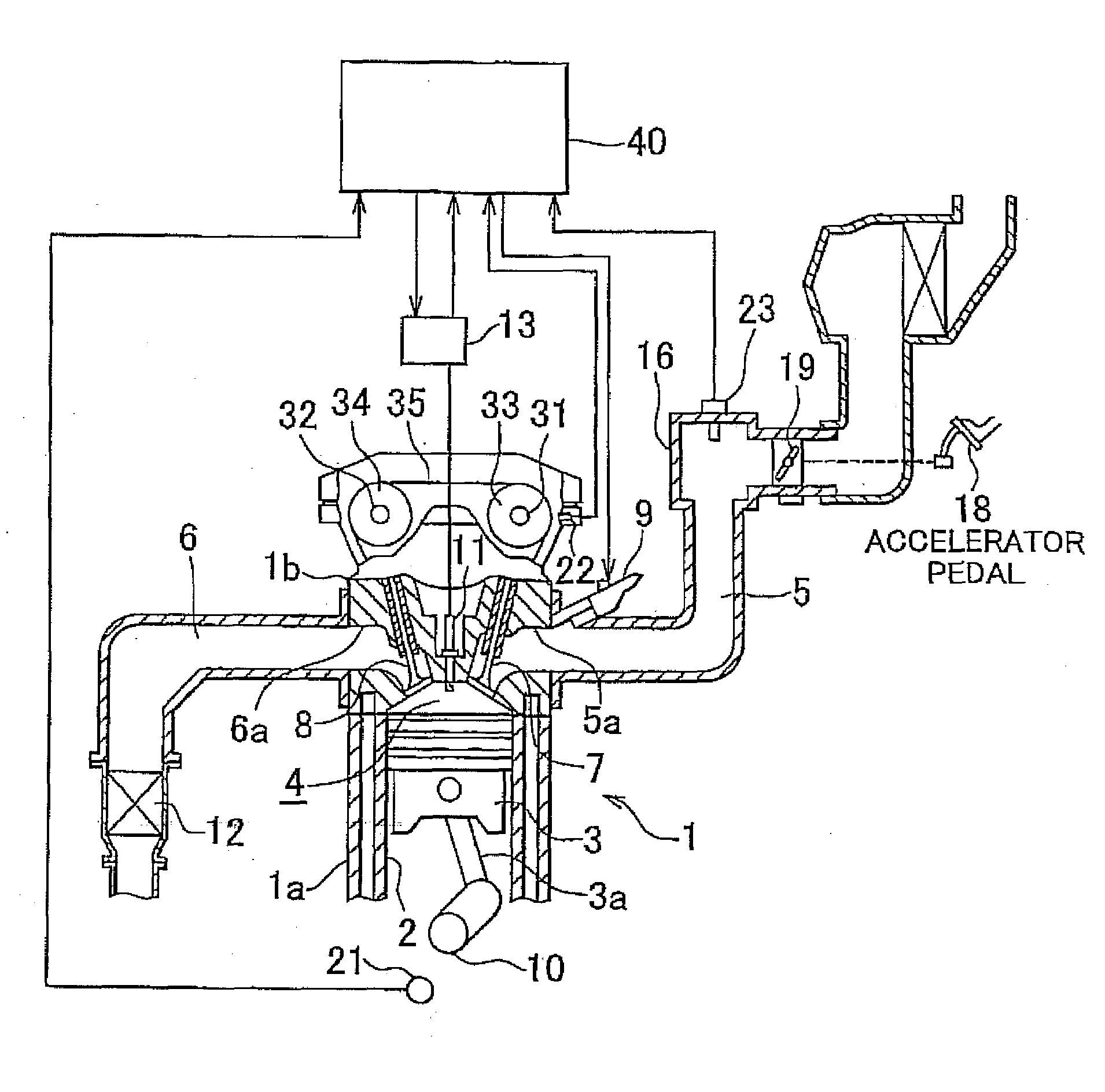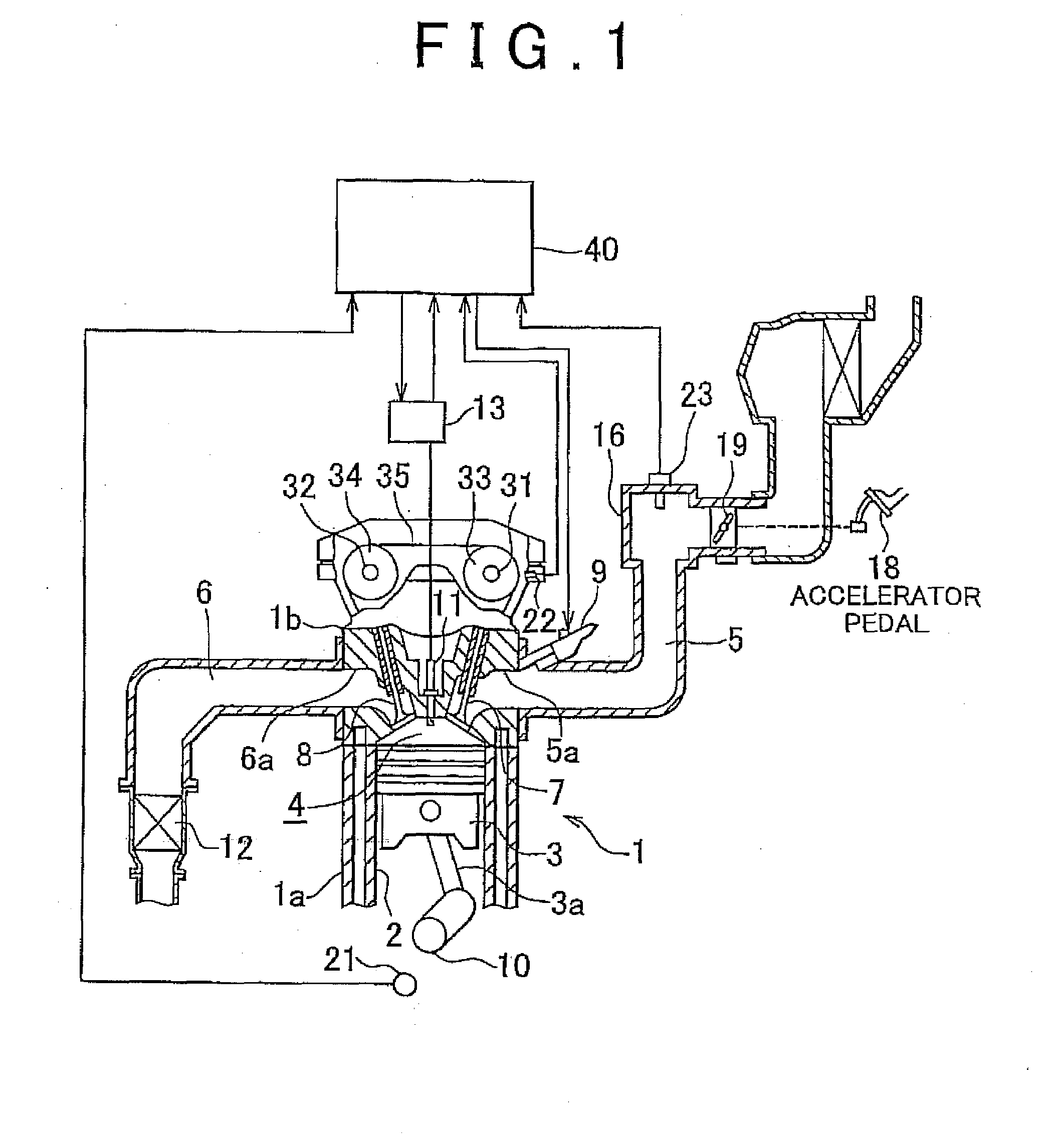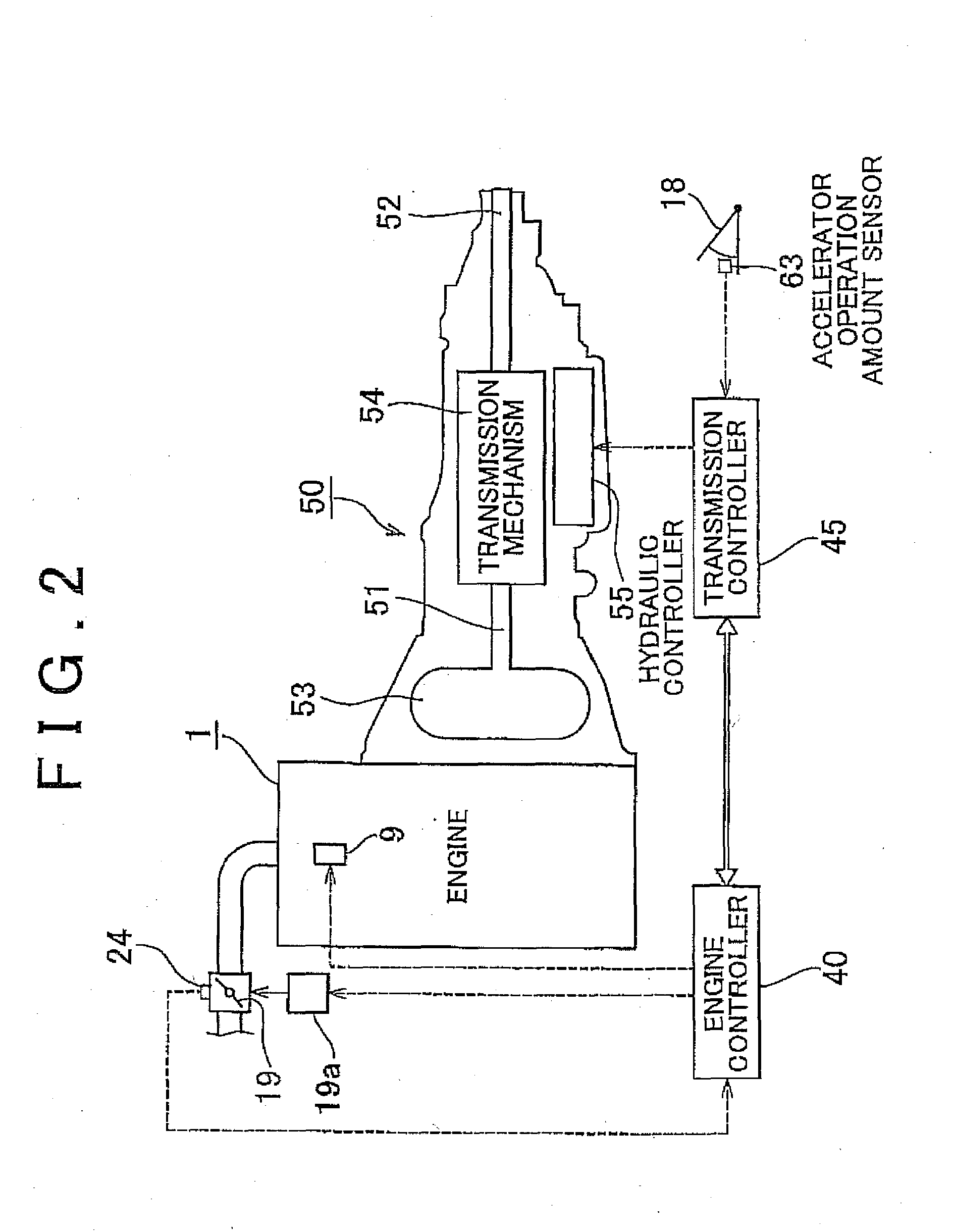Misfire determination device and misfire determination method for internal combustion engine
- Summary
- Abstract
- Description
- Claims
- Application Information
AI Technical Summary
Benefits of technology
Problems solved by technology
Method used
Image
Examples
first embodiment
[0078]First, a misfire determination made by the misfire determination device will be described. The misfire determination device utilizes two types of rotation fluctuation amounts, that is, a first rotation fluctuation amount (eddtcrx) and a second rotation fluctuation amount (edltmfh) described below, in order to determine whether a misfire has occurred.
[0079]The procedure of calculating the first rotation fluctuation amount (eddtcrx) and the second rotation fluctuation amount (edltmfh) will be described below. The first rotation fluctuation amount (eddtcrx) is a value obtained by subtracting a second difference from a first difference. The first difference is a difference between a duration required for the crankshaft 10 to rotate from a compression top dead center to a bottom dead center by 180° crank angle (CA) in a current cylinder that is currently in the expansion stroke (hereinafter, the duration is referred to as “expansion stroke duration”) and an expansion stroke durati...
second embodiment
[0135]Next, a misfire determination made by a misfire determination device will be described. The misfire determination device calculates a duration T1 required for rotation from 0° to 30° crank angle (CA) toward a retardation side with respect to a position 360° CA before using the compression top dead center of each cylinder as a reference, and similarly calculates a duration T2 required for rotation from 90° to 120° CA toward a retardation side. The durations T1 and T2 are respectively durations required for rotating 30° CA corresponding to angles at which a duration required for the crankshaft 10 to rotate 30° CA is estimated to become a local maximum and angles at which a duration required for the crankshaft 10 to rotate 30° CA is estimated to become a local minimum for each ignition.
[0136]In addition, a duration T3 required for the crankshaft 10 to similarly rotate from 0° to 30° CA toward a retardation side with respect to a position 360° CA after a position, at which the cu...
third embodiment
[0212]Next, a misfire determination made by a misfire determination device will be described. The misfire determination device utilizes the following rotation fluctuation amount (eddtcrx) and 90° CA rotation duration (edt), which is a value correlated with an engine rotational speed in an expansion stroke in order to determine whether a misfire has occurred.
[0213]The rotation fluctuation amount (eddtcrx) is calculated as a value based on a difference between the engine rotational speeds (duration required for rotating a predetermined crank angle) in the respective expansion strokes of a plurality of cylinders (the details of calculation of the rotation fluctuation amount will be described later). On the other hand, the 90° CA rotation duration (edt) is a duration required for rotating by 90° CA (Crank Angle) in the expansion stroke of each cylinder, and is calculated as a value that does not receive the influence of the engine rotational speed in another cylinder (the 90° CA rotati...
PUM
 Login to View More
Login to View More Abstract
Description
Claims
Application Information
 Login to View More
Login to View More - R&D
- Intellectual Property
- Life Sciences
- Materials
- Tech Scout
- Unparalleled Data Quality
- Higher Quality Content
- 60% Fewer Hallucinations
Browse by: Latest US Patents, China's latest patents, Technical Efficacy Thesaurus, Application Domain, Technology Topic, Popular Technical Reports.
© 2025 PatSnap. All rights reserved.Legal|Privacy policy|Modern Slavery Act Transparency Statement|Sitemap|About US| Contact US: help@patsnap.com



